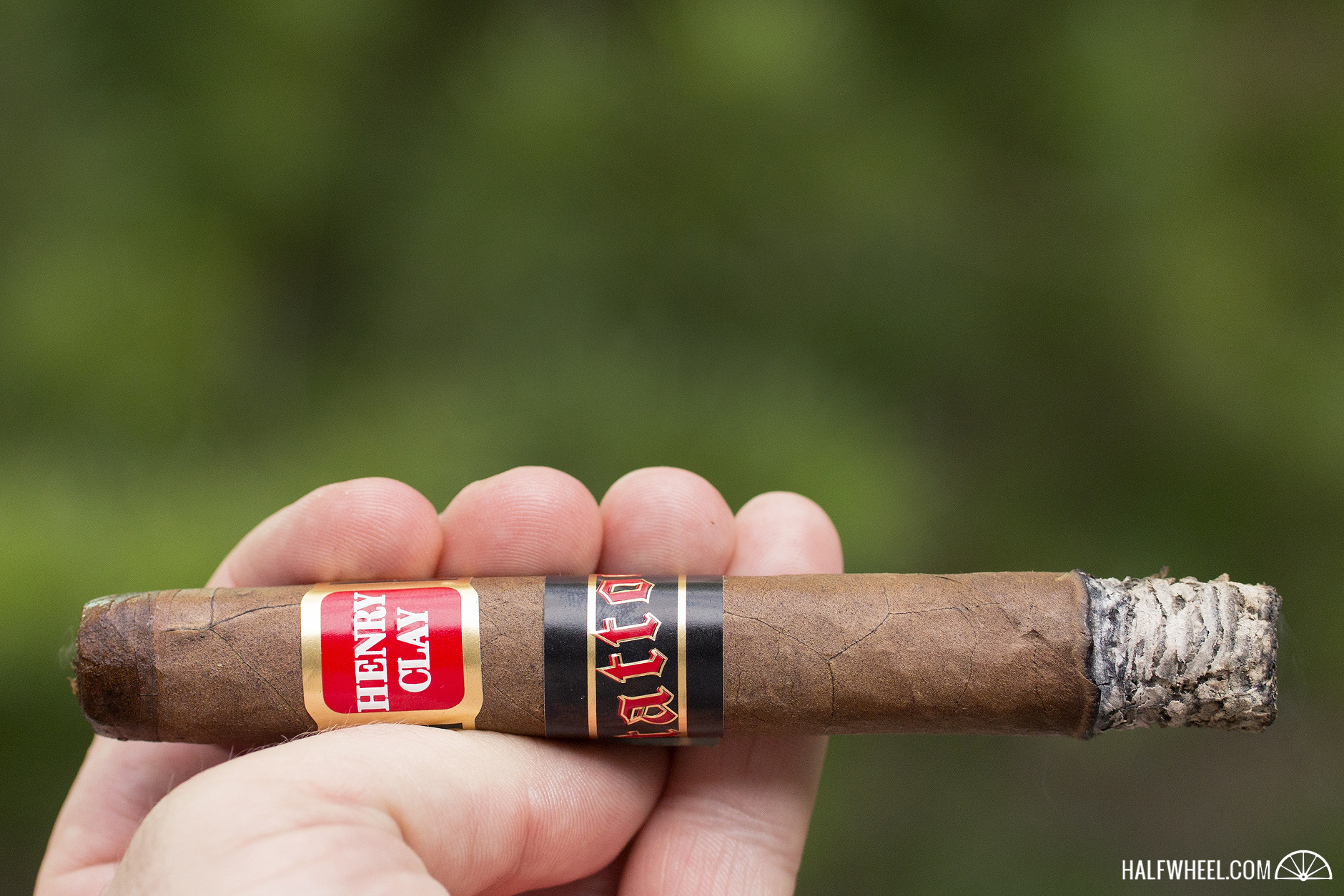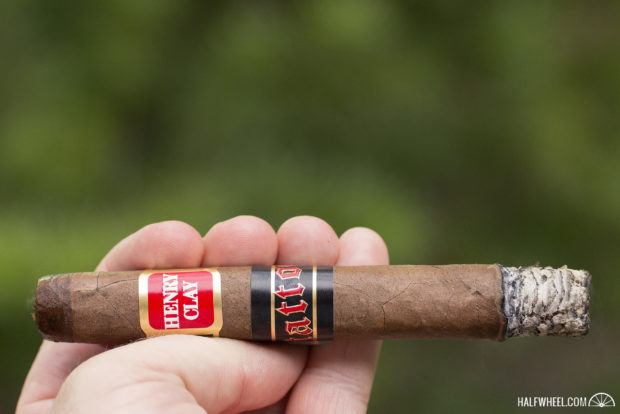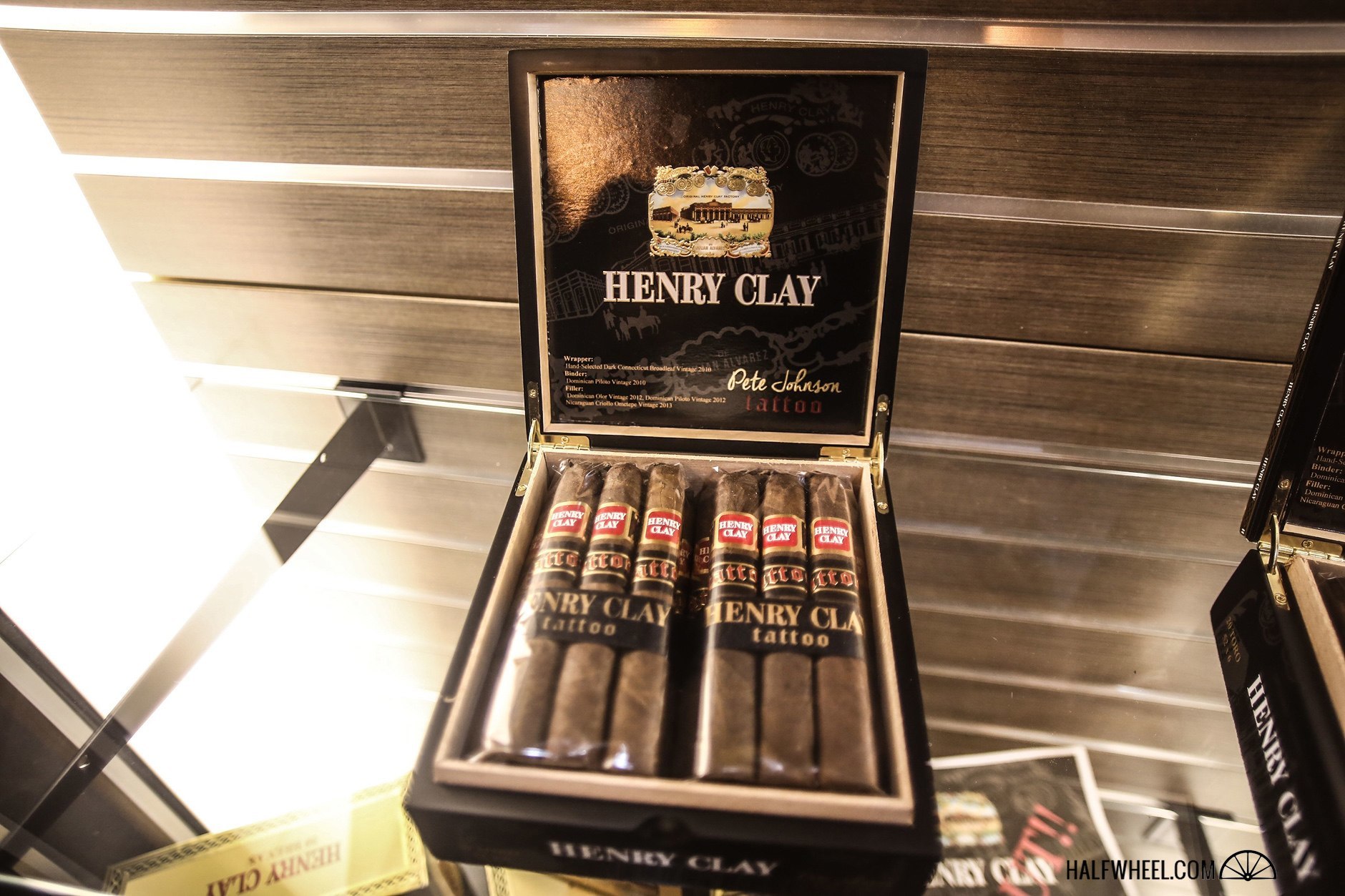The cigar industry can bring together some interesting collaborations, none of which may have been more interesting and intriguing than the one between Tatuaje’s Pete Johnson and the tobacco giant Altadis U.S.A., which resulted in the Henry Clay Tattoo.
This new cigar was of interest at several levels; first, it was a Pete Johnson release, and with that comes some inherent excitement from his extensive following. Second, it was a collaboration between one of the people most commonly seen as boutique and outside the corporate world of cigars working with the industry’s biggest cigar maker. The reason for that, which leads to the third point, is that Johnson is a fan of the Henry Clay brand, calling it “one of my favorite brand names and my favorite Altadis product.” Fourth, the Henry Clay Tattoo was a collaboration between Johnson and the company who sued him in 2009 over the fleur de lis logo that Johnson used on Tatuaje releases and that Altadis’ flagship brand, Montecristo, uses on its releases. It should be noted that the two sides reached a relatively quick settlement, which saw Johnson able to continue to use the symbol on existing product, although future Tatuaje releases would have to be made without the symbol.
Adding to the intrigue was that it added to a growing list of collaborations that Altadis U.S.A. was doing with smaller brand owners and others in the industry, including the Espada by Montecristo, which was made by the Plasencia family in Nicaragua and clearly promoted as such; the ROMEO by Romeo y Julieta Aging Room Small Batch F25, a collaboration with Rafael Nodal of Boutique Blends and made at Tabacalera Palma; and a second Plasencia-made Montecristo, the Estoque.
Even more intriguing was that Henry Clay has been a brand that has faded into near obscurity in recent years, going from a medium-bodied cigar shop staple to occasional find, pushed to the corners of humidors by the ever growing number of new releases. While Altadis U.S.A. had been refreshing brands in the years leading up to the release of the Tattoo, Henry Clay was certainly not one of them, yet the line also added the Henry Clay Stalk Cut Toro in January 2016, though it was not a collaboration with Johnson, but rather a cigar developed by Altadis U.S.A. on its own.
Here’s what I said about the Henry Clay Tattoo cigar when I reviewed it in November 2015:
Somewhere between your average off-the-shelf Tatuaje and an off-the-shelf Altadis product is the Henry Clay Tattoo. It’s nowhere near Tatuaje’s best offerings, and it’s certainly one of the better releases I’ve had from the tobacco giant. I would have loved a bit more complexity and transitions, but the flavors that are offered are fairly solid and enjoyable from start to finish. It’s certainly worth trying a few, and for some I’m sure this will creep into box-split or even box purchase territory. If anything, this is a great example of what can go very right when two entities come together and when Altadis U.S.A. has another palate and set of eyes are let loose in the company’s vast stores.
- Cigar Reviewed: Henry Clay Tattoo
- Country of Origin: Dominican Republic
- Factory: Tabacalera de García
- Wrapper: Connecticut Broadleaf (2010)
- Binder: Dominican Piloto (2010)
- Filler: Dominican Olor & Piloto (2012) & Nicaraguan Ometepe (2013)
- Length: 6 Inches
- Ring Gauge: 52
- Vitola: Toro
- MSRP: $9 (Boxes of 20, $180)
- Release Date: September 2015
- Number of Cigars Released: 2,500 Boxes of 20 Cigars (50,000 Total Cigars)
- Number of Cigars Smoked For Redux: 1
The Henry Clay Tattoo is much like I remember it—double banded with a flat pigtail pressed against its side and a bit of a box press to it, though the wrapper seems a bit lighter in color, somewhere between cocoa powder and old leather. It’s a somewhat dry capa, soft to the touch but not presenting much in the way of oils. The box press isn’t extreme but is unmistakeable, as the bands show it off best as both overhang a bit and could have used a trim. There is just a bit of uniform give, and the cigar feels balanced in the hand. From the foot I get a fragrance that is somewhat sweet and apple-laden, somewhat floral, and overall hard to compare to anything. There is also a bit of dense cake donut and very subtle teases of dry wood and pepper. The cold draw is just a tick firm and shows a slightly heavier profile; the cake donut sets the base and has a touch of moistness to it, with a honey sweetness faintly in the background but no appreciable pepper or spice.
After a bit more time to toast the cigar evenly than I was expecting, the Henry Clay Tattoo gets off to a solid medium-bodied start that offers a decent amount of pepper on top of a woody, slightly earthy base. Smoke production and the early burn are both solid; the former certainly better than the picture taken on a breezy day might indicate. Retrohales are peppery in a near ideal way, with a slightly charred twinge to them but certainly manageable for those who employ and enjoy the technique. A bit of creaminess begins to develop in the smoke at the end of the first inch, which also happens to be where the first clump of ash lets go, and while the cigar is far from sweet now, it does have a bit more complexity that draws in some creamy sweetness. The Tattoo then begins a slow easing into a bit more hearty of a profile as it approaches the midway point, picking up a bit more char and pepper, with touches of earth and steak slowly coming around as well. Through the first half, the cigar has performed well.

While the building of robustness is gradual through the second third, it really begins to take off when the final third of the Henry Clay Tattoo commences, as the pepper takes an emboldened step forward both on the palate and in the nose. There’s also an increasingly mouth-drying effect that the cigar generates, with the flavor suggesting a back-and-forth between dry wood and soil. The sweetness found earlier is still present, but in a greatly reduced capacity, as the blend seems intent on showing off the soil of its heritage in the final two inches, with a bit of heat being added in at times. The aroma also turns pleasantly smoky, with a hearty campfire coming through the nostrils. What had been a fairly nicotine-laden cigar has mellowed out in that regard as well, leaving almost all of the experience above the neck.
Disclosure: Both Altadis U.S.A. and Tatuaje advertise on halfwheel.
Judging from the comments left on my original review of the Henry Clay Tattoo, the cigar didn’t meet the expectations set by several readers. Yet while I maintain that the cigar was decent when it came out, it seems to have gotten a few ticks better with time. The first two thirds are much smoother and balanced, and while the final third still has some room to improve, it too seems to be in a better place than it was nearly a year ago. If you’ve been waiting for a good time to revisit these—or you can still find them at a shop—it certainly seems worth giving the Henry Clay Tattoo another look.



